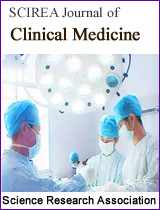Clinical results in treatment of patients with spinal cord injuries, by transplantation of olfactory mucosa autografts: a case-series
DOI: 10.54647/cm32760 99 Downloads 14290 Views
Author(s)
Abstract
Introduction: Chronic traumatic Spinal Cord Injuries (SCI), leave a significant percentage of permanent motor and sensory disability. Transplantation of Olfactory Mucosa Autografts (OMA) at the lesion site is a hopeful procedure. We present a case-series of patients with SCI treated with OMA.
Material and methods: The AIS scale was utilized for neurologic evaluation. The features of the spinal cord lesion were determined by MRI. Neurophysiological studies were used in patients with clinical improvement. A program of rehabilitation after surgery was used at least for one year.
Results: Twenty patients underwent OMA (17 males, 3 females, age range: 22-40 years, mean age: 29.25±6.6 years).13 patients (13/20, 65%) had tetraplegia and 7 (7/20, 35%) paraplegia. Overall 80% of the patients were in ASIA score A and 30% score B. During the follow-up period, 9 patients presented improvement in ASIA scale estimation (9/20, 45%); 8 from A to B, and 1 from A to C. A complication rate of 25% was noted.All postoperative complications were minor and treated during in-hospital stay.
Conclusion: OMA in patients with SCI, offers minor clinical benefits in up to 45% of patients. Intensive rehabilitation is an important factor of maintenance and improvement of clinical and functional results obtained.
Keywords
Spinal Cord Injury, Olfactory Mucosa Autografts, Rehabilitation, complications
Cite this paper
Christos A. Gogos, Lucas M. Moschos, Agis D. Komis, George V. Bagias, Dimitrios C. Papacostantinou, Anestis A.Charalampopoulos,
Clinical results in treatment of patients with spinal cord injuries, by transplantation of olfactory mucosa autografts: a case-series
, SCIREA Journal of Clinical Medicine.
Volume 7, Issue 1, February 2022 | PP. 30-38.
10.54647/cm32760
References
| [ 1 ] | Singh A, Tetreault L, Kalsi-Ryan S, et al (2014) Global prevalence and incidence of traumatic spinal cord injury. Clin Epidemiol 6:309–331. https://doi.org/10.2147/CLEP.S68889 |
| [ 2 ] | Iwatsuki K, Yoshimine T, Kishima H, et al (2008) Transplantation of olfactory mucosa following spinal cord injury promotes recovery in rats. Neuroreport 19:1249–1252. https://doi.org/10.1097/WNR.0b013e328305b70b |
| [ 3 ] | Abbaszadeh H-A, Niknazar S, Darabi S, et al (2018) Stem cell transplantation and functional recovery after spinal cord injury: a systematic review and meta-analysis. Anat Cell Biol 51:180–188. https://doi.org/10.5115/acb.2018.51.3.180 |
| [ 4 ] | Yao R, Murtaza M, Velasquez JT, et al (2018) Olfactory Ensheathing Cells for Spinal Cord Injury: Sniffing Out the Issues. Cell Transplant 27:879–889. https://doi.org/10.1177/0963689718779353 |
| [ 5 ] | Lima C, Pratas-Vital J, Escada P, et al (2006) Olfactory mucosa autografts in human spinal cord injury: a pilot clinical study. J Spinal Cord Med 29:191–196. https://doi.org/10.1080/10790268.2006.11753874 |
| [ 6 ] | Roberts TT, Leonard GR, Cepela DJ (2017) Classifications In Brief: American Spinal Injury Association (ASIA) Impairment Scale. Clin Orthop Relat Res 475:1499–1504. https://doi.org/10.1007/s11999-016-5133-4 |
| [ 7 ] | Cavalli L, Arcangeli M, Paladini A, et al (2019) Importance of motor rehabilitation (R.I.C) in medullary lesions in chronic phase. Surg Case Reports Rev 3:. https://doi.org/10.15761/SCRR.1000134 |
| [ 8 ] | Lima C, Escada P, Pratas-Vital J, et al (2010) Olfactory mucosal autografts and rehabilitation for chronic traumatic spinal cord injury. Neurorehabil Neural Repair 24:10–22. https://doi.org/10.1177/1545968309347685 |

